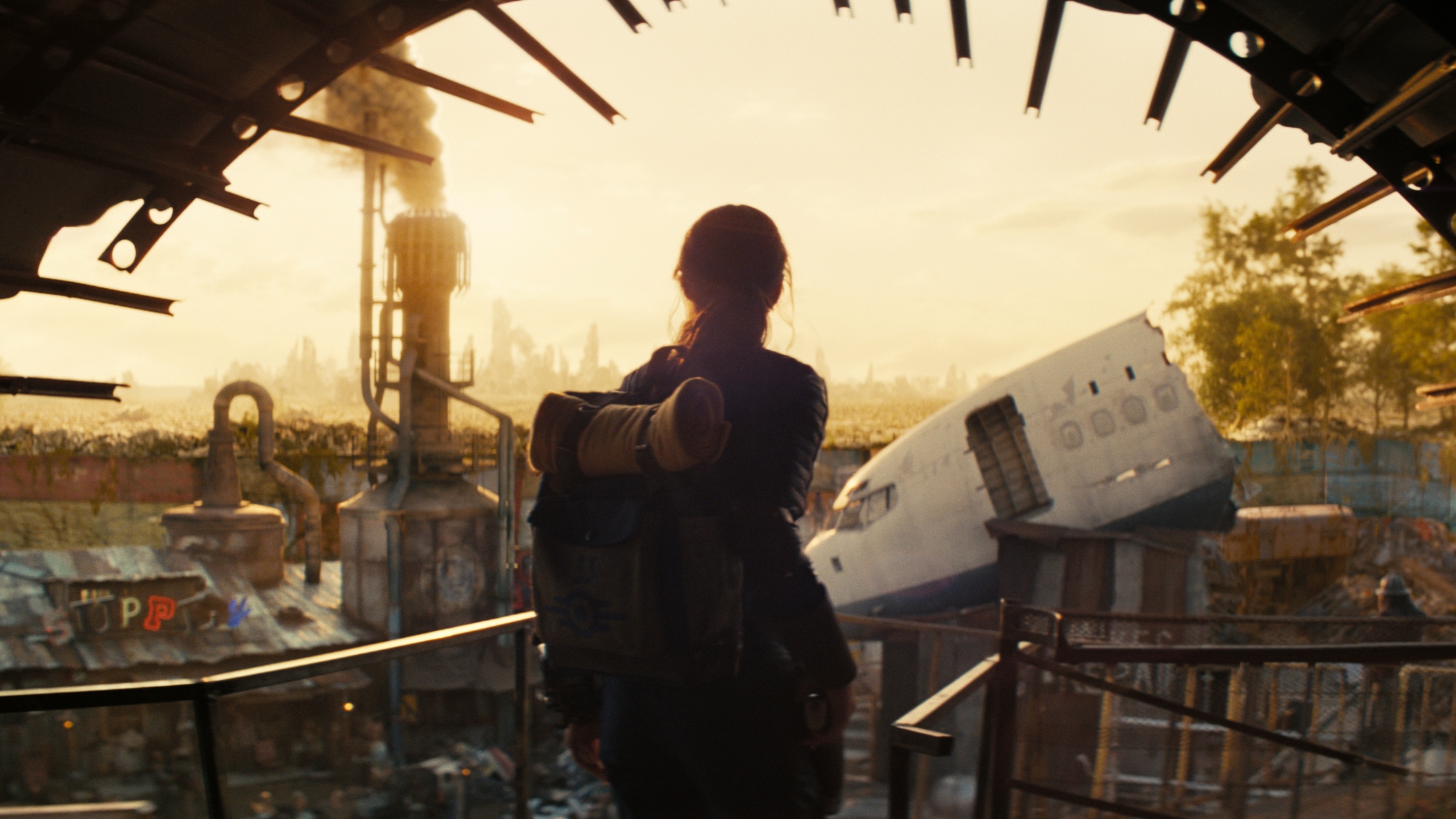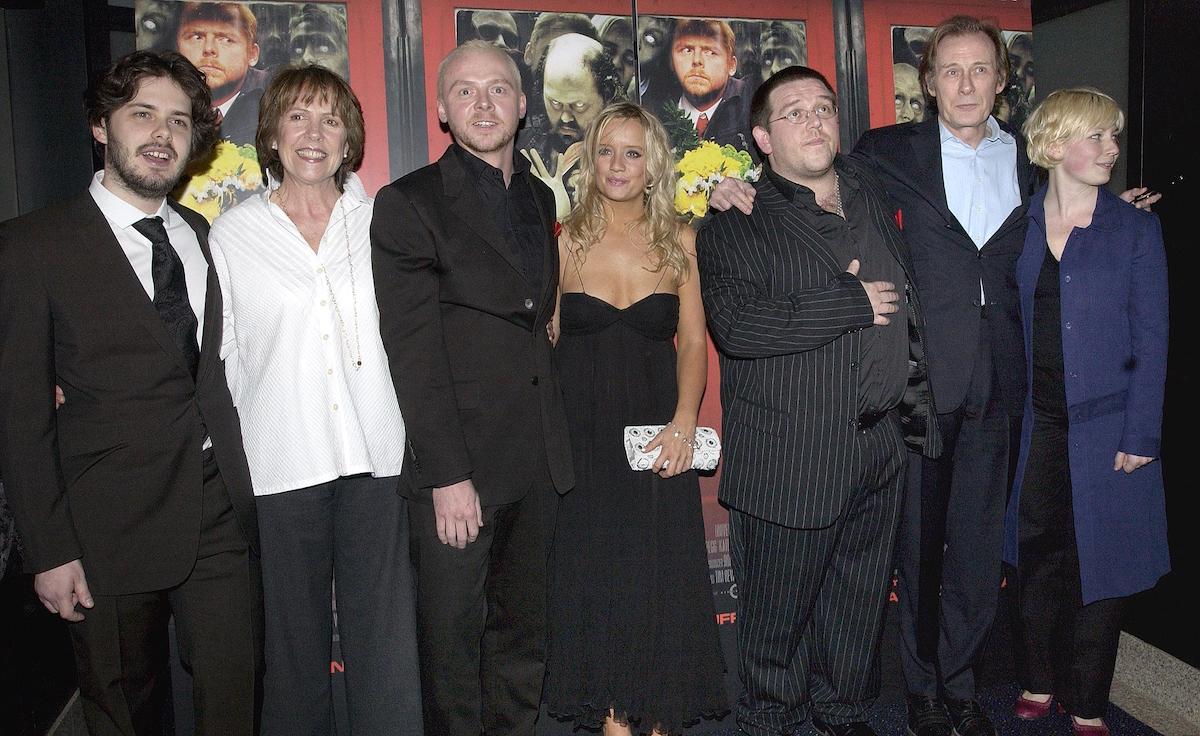The 15 Best Post-Apocalyptic Movies to Watch After Fallout
The debut of Amazon’s Fallout series is a major moment for fans of the gaming franchise who have long dreamed of an adaptation of the legendary RPG franchise. Of course, since every episode of that series is being released at once, there’s a good chance you’ll finish the post-apocalyptic series pretty quickly and be left […] The post The 15 Best Post-Apocalyptic Movies to Watch After Fallout appeared first on Den of Geek.

The debut of Amazon’s Fallout series is a major moment for fans of the gaming franchise who have long dreamed of an adaptation of the legendary RPG franchise. Of course, since every episode of that series is being released at once, there’s a good chance you’ll finish the post-apocalyptic series pretty quickly and be left feeling as empty as an apocalyptic wasteland.
Thankfully, there is no shortage of tremendous post-apocalyptic movies out there to help you fill that void. From some of the most shocking films ever made to bonafide action classics, the post-apocalyptic genre is a surprisingly robust slice of sci-fi that has gifted us with numerous masterpieces.
In fact, it was so tough to choose between the best of those movies that I ultimately focused more on the best post-apocalyptic movies that share some notable traits with the Fallout franchise. That said, anyone who really wants to dive into the cinematic inspirations for those games should also check out some of the 1950s sci-fi movies (most notably, Them!, The Blob, and The Day the Earth Stood Still) that weren’t technically eligible for this topic.
Things to Come (1936)
The oldest film on this list, Things to Come sometimes exhibits its age in ways that some may struggle to tolerate. It’s a real slow burn (to put it mildly), it’s uneven, and even some of its better ideas can feel outdated if you don’t view them in the proper context.
Yet, Things to Come’s age is the source of its greatest attribute: its sheer style. Written by H.G. Wells himself, this movie features a 1930s version of the kind of “World of Tomorrow” technology that we see throughout the Fallout series. While it’s an overall fascinating piece of sci-fi filmmaking that would appropriately help shape many of the movies we’ll soon discuss, the film’s costumes, sets, and overall aesthetic make it an essential recommendation for this particular topic.
Day the World Ended (1955)
This 1955 Roger Corman sci-fi movie follows a small group of survivors who battle against mutant monsters in the post-apocalypse. The images that were likely beamed into your head when you heard “1955,” ‘Roger Corman,” and “sci-fi” probably aren’t that far off from the real thing.
While this film’s B-movie style is certainly part of its charm, it must be said that this movie at least had some compelling ideas. I’m especially impressed by the way Day the World treats atomic radiation as a threat as significant as its mutants and more malicious survivors. Corman’s workman style of filmmaking and the movies’ period authentic nature make this feel like one of the fictional bits of pre-war culture the Fallout games often reference.
A Boy and His Dog (1975)
One of the most notable and obvious influences on the Fallout franchise, A Boy and His Dog follows a young man and his telepathic canine friend as they try to survive in the desert following an apocalyptic event. While there are 1:1 comparisons between this movie and the Fallout games, the film’s biggest influences are slightly more subtle. Its Western-like nature, bleakness, depictions of underground societies, and vague “Americana” elements almost make this feel like a retroactive Fallout adventure.
Just know that this movie is often incredibly tough to watch. Hey, it is based on a Harlan Ellison novel after all. At the very least, anyone uncomfortable with depictions and discussions of rape needs to stay as far away as possible from this movie. That said, one of its darkest elements (its ending) was another clear influence on Fallout’s eventual sense of humor.
Damnation Alley (1977)
Truth be told, Damnation Alley is not a great movie. At the very least, this tale of a group of survivors trying to cross a hostile post-apocalyptic desert is a wildly uneven experience. If you do not have a lot of love/patience for that trippy style of ‘70s sci-fi filmmaking, you probably won’t get a lot out of this one.
So why is it on this list? Well, between the giant mutated insects and a plot that at least tries to balance camp with philosophical musings, Damnation Alley comes remarkably close to capturing the feel and look of a Fallout game. I’m not saying you have to watch this, but if you love heavily armored assault Winnebagos and the mutated creatures that wish to destroy them, it should at least be on your radar.
Stalker (1979)
This Andrei Tarkovsky movie follows a kind of mercenary figure known only as “Stalker” who leads two travelers across the wasteland in search of a mythical area that is said to have the power to make your wishes come true. Though most obviously an influence on the S.T.A.L.K.E.R. game franchise, you can certainly see elements of Fallout in this movie’s set design, themes, and color palette. Fallout 3, in particular, seemingly borrowed liberally from the look of this one.
Most importantly, Stalker is an amazing movie that stands tall as one of the most creative, engaging, and unforgettable depictions of a post-apocalyptic world in all of film. It’s a transcendent experience with an atmosphere you can just lose yourself in.
Mad Max 2: The Road Warrior (1981)
Arguably the best overall movie on this list (and certainly among the most influential), The Road Warrior is a monumental achievement in the art of making movies that simply slap. The Road Warrior’s relentless pacing and incredible design concepts helped create a new language for post-apocalyptic storytelling and filmmaking. Despite many imitators of varying quality, The Road Warrior remains an essential experience.
Granted, this is essentially an entry for the entirety of the Mad Max franchise (especially the generational experience that is Fury Road). The Fallout games are filled with direct references to those movies and practically feel bonded to that franchise on a spiritual level.
The Atomic Cafe (1982)
The Atomic Cafe is a documentary that compiles numerous pieces of 1950s propaganda footage about the growing threat and culture of nuclear war. In other words, it’s a Hall of Fame collection of the “Americana meets the end of the world” footage that directly inspired the bulk of the Fallout franchise. It’s darkly humorous to watch this and realize how liberally Fallout borrowed from the visuals, ideas, and language featured in clips like these.
Despite not featuring any narration, The Atomic Cafe also manages to tell a compelling story about the true nature of its footage and the culture that spawned it. Amongst all the misinformation and fearmongering going on at the time are some genuinely terrifying reminders of how we learned to fear the possibility that everything good in the world could end in a moment. At times, we even see reminders of the strange ways we tried to make morbid peace with that possibility.
Threads (1984)
The 1980s saw the release of several major films that dared to ask “What would the post-nuclear war world look like?” They are notorious for their unflinching depictions of that nightmare scenario which made them truly shocking in their times and no less unsettling now. And while I have to acknowledge movies like The Day After, When the Wind Blows, and Testament for being offering some of the most painful experiences ever put on film, Threads is the “winner” of this “Watch it once and never again” sub-genre.
Threads utilizes a documentary-like filming style to follow residents of Sheffield, England as they try to simply continue existing in the fallout of a nuclear war. While Threads is filled with scenes you will never be able to scrub from your mind, its most lasting impact is the truly terrifying notion that it may be better to die during a nuclear explosion than be forced to survive in the world that is left. It’s bleaker than the Fallout games tend to be, but it’s an essential reminder of the horror at the heart of this genre.
Night of the Comet (1984)
This overlooked ‘80s horror gem follows two sisters who manage to survive a post-apocalyptic scenario triggered by a passing comet. Though they are now two of only a handful of non-mutated people left in the greater Los Angeles area, the effects of that comet left much of the rest of the city remarkably untouched. In other words, there are now no lines at the mall.
If you’ve never seen this movie, you’re missing out on one of the great sci-fi horror films from a decade filled with great sci-fi horror films. Night of the Comet‘s intoxicating blend of camp and apocalyptic dangers often reminds me of some of my favorite parts of the Fallout series. This is also a truly fantastic piece of female-focused horror that is perfect for Buffy the Vampire Slayer fans or anyone who wants to see a post-apocalyptic version of Clueless.
Radioactive Dreams (1985)
The late, great Albert Pryun’s Radioactive Dreams went largely overlooked when it received a scattered release in the mid-1980s. Years later, the film’s ascension to cult classic status was partially led by Fallout fans who saw this movie that combined 1940s pulp culture and post-apocalyptic sci-fi concepts and said “Wait, is this the movie that Fallout is based on?”
While that is not technically the case, Radioactive Dreams was a massive stylistic inspiration for 1988’s Wasteland, and Wasteland was the spiritual predecessor to the Fallout franchise. In any case, this movie’s flaws are easy to overlook when you’re watching two wannabe old-timey private eyes named Phillip Hammer and Marlowe Chandler test their perceived abilities in a post-apocalyptic world devoid of morality and reason but filled with gangs and mutants. It’s wonderfully weird stuff.
The Miracle Mile (1988)
This is technically a rare example of a “pre-apocalypse” movie, but the film’s unique set-up grants is the source of several qualities that make it perfect for this topic.
The Miracle Mile tells the story of two average people (Harry Washello and Julie Peters) who instantly fall in love after a chance encounter at the La Brea Tar Pits. What essentially begins as a rom-com soon takes a shocking turn when Harry accidentally receives a phone call from a man who claims the world is going to end in a little over an hour. Harry must now scramble across LA to find Julie before it’s as too late as “too late” gets.
Despite its many ’80s trapping (including an incredible Tangerine Dream soundtrack), there is an underlying sense of 1950s style throughout this movie that taps into the nuclear paranoia of that era. From the big body cars to the loving shots of LA diners, The Miracle Mile invokes a kind of “golden age” charm that it corrupts and examines in some of the most devastating ways imaginable. It’s one of the best nuclear thrillers of the 1980s.
Six-String Samurai (1998)
Another contender for the “Wait, is this actually a Fallout movie?” crown, Six-String Samurai is notably the first movie on this list released in the post-Fallout era. Of course, it would probably be more accurate to say that this story of a wandering ‘50s-style rocker turned post-apocalyptic samurai was likely more inspired by the early works of Quentin Tarantino, Hong Kong action cinema, and some of the movies we’ve already discussed. Then again, there is a settlement in the movie called “Fallout,” which is at least quite funny in retrospect.
In any case, Six-String Samurai is a ton of fun. This is one of those movies that falls somewhere between “so bad, it’s good” and “legitimately kind of great.” Fans of movies like Kung Fu Hustle may fall in love with this film’s relentless combination of action, humor, and an underlying desire to ensure each scene is somehow more outlandish than the one that preceded it. Everyone else should check it out for its stylish send-up of the post-apocalyptic genre that still manages to utilize some of the tenets of that concept quite nicely.
I Am Legend (2007)
While there have been a few movie adaptions of Richard Matheson’s 1954 novel I Am Legend over the years, I think this 2007 film is the most complete interpretation of that story. At the very least, it’s the one that may resonate most with Fallout fans.
After all, who can relate more to the trials and tribulations of a man and his dog scrounging for resources and purpose at the end of the world than hardcore Fallout fans who have often tried to make the most out of similar scenarios? This movie also does an excellent job of addressing the quieter dangers of long-term isolation. Watching Will Smith’s Robert Neville try to maintain some kind of semblance of a modern life at the end of everything is a haunting yet compelling experience.
The Road (2009)
Though calling most Cormac McCarthy stories “bleak” feels a bit redundant, The Road is one of the author’s most distressing works. While there is a measure of hope in this story, the amount of pain endured en route to anything resembling a sense of optimism often feels unbearable.
Thankfully, John Hillcoat’s 2009 adaptation of that novel retains much of the original story’s potency. Through the travels of a father and son who endure seemingly every horror the end of the world can offer, we are forced to weigh the greater value of “goodness” against the practicality of ensuring the survival of those who mean most to us. Fallout fans will also feel a potential twinge of familiarity with every sweeping shot of another ruined landscape. For that matter, The Last of Us fans who have never seen this one will almost certainly find themselves recreating the “Leo pointing at the screen” meme.
The Book of Eli (2010)
To be honest, I think The Book of Eli is one of the weaker overall movies on this list. Not even Denzel Washington’s eternal charm can entirely make up for this movie’s heavy-handed themes, numerous script problems, and strange lack of bite for a post-apocalyptic story.
However, I find The Book of Eli’s status as the “dad movie” version of post-apocalyptic tropes to be pretty fascinating. It’s interesting to watch a movie that features so many ideas that once made the post-apocalypse the home of our worst fears play out like the kind of thriller that airs on TBS at 3 PM on a Saturday afternoon. Mind you, that’s not really a knock against the movie but rather an observation about the ways this movie taps into a form of post-apocalyptic action that stands in contrast to many of the earlier examples of that sub-genre.
Fallout is streaming now on Amazon Prime Video.
The post The 15 Best Post-Apocalyptic Movies to Watch After Fallout appeared first on Den of Geek.
What's Your Reaction?





















































